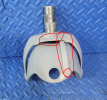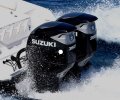Rain City
Crew Member
Is this normal? I've never noticed it before but I'm wondering if it has something to do with the reverse lock that I just had fixed. When I throw the boat in reverse it goes from my normal -3 up to a +1. And then drops down again when I take it out of gear. These sensors have been a constant issue so at first I didn't think much of it. But then I realized that this one is actually currently working when I adjust the trim at rest. The other side is just dummied because it broke four times.



